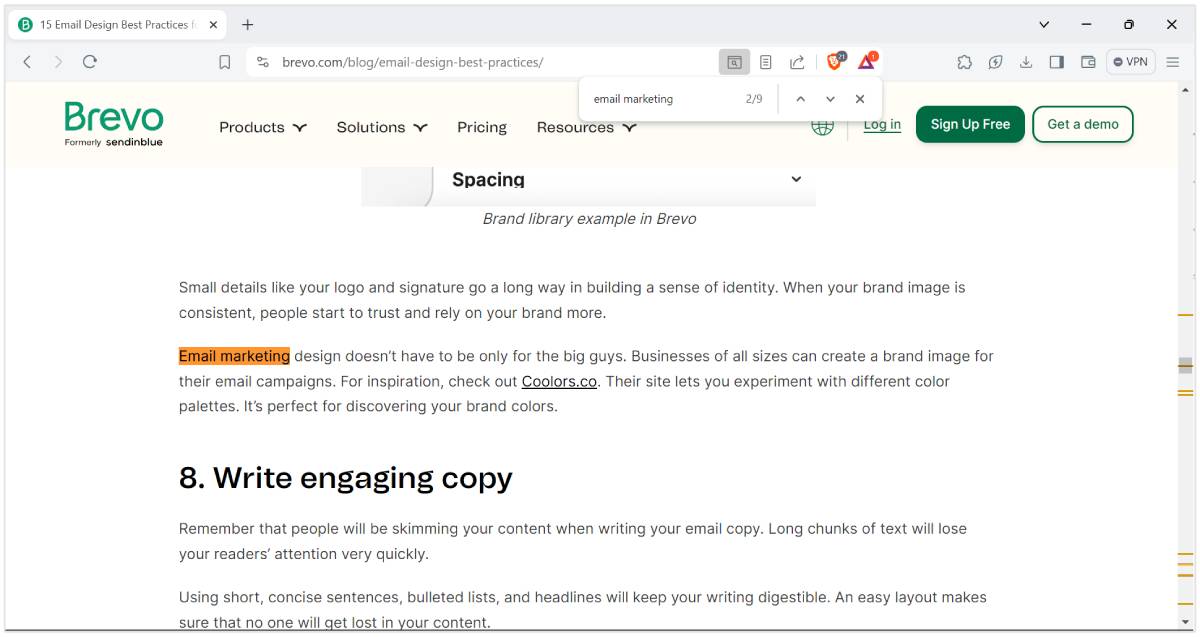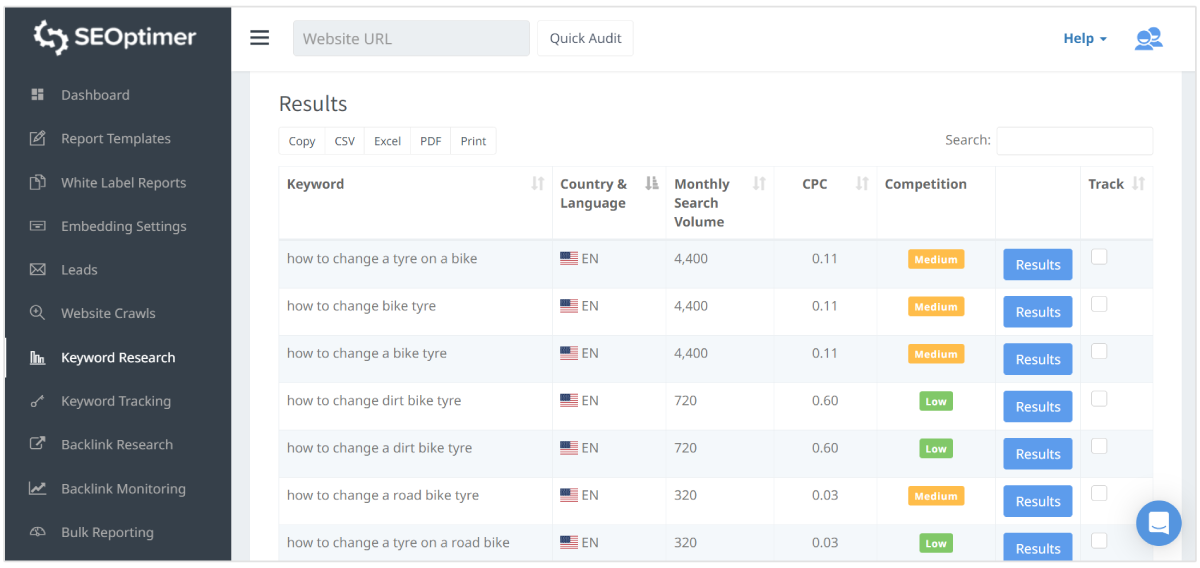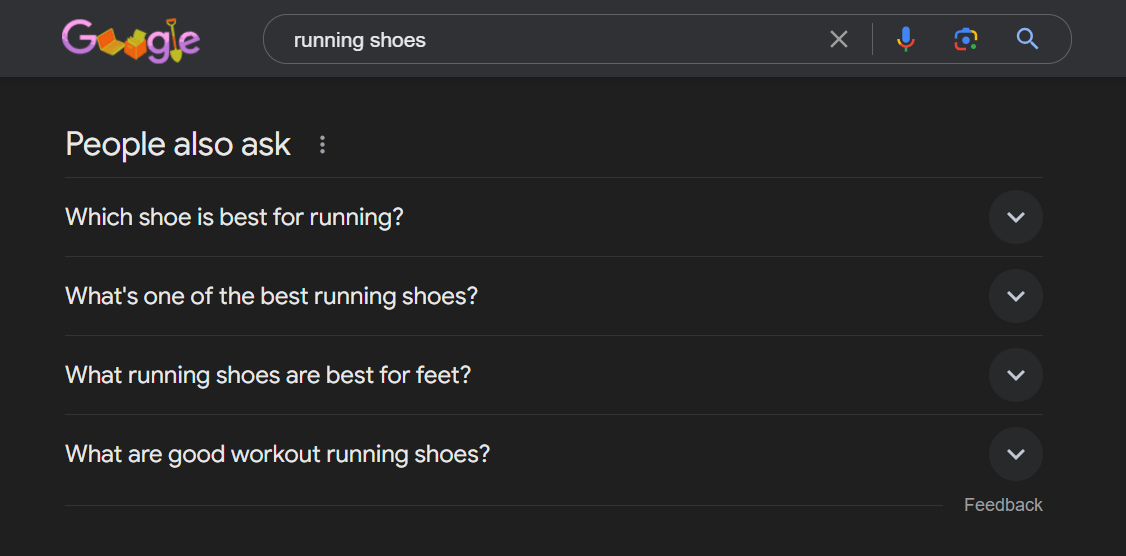
When it comes to optimizing your website and blog content for search engines, understanding the role of secondary keywords is quite important.
Secondary keywords help in diversifying your on-page keywords and capturing additional audience segments and searches.
In this post, you will learn how to find the best secondary keywords for your SEO content. We'll also look at some practical examples of how websites are using secondary keywords.
What are Secondary Keywords?
Secondary keywords are terms closely related to your primary keyword. They add depth and context to your content.
These keywords aren't just long-tail keywords. Secondary keywords can be synonyms or close variants of your focus keyword.
By using secondary keywords in your content and on your pages, you can reach a more niche audience and improve your chances of ranking higher in search engine results pages (SERPs).
Examples of Secondary Keywords
Example 1: Nutrition by Mandy

This blog post on Nutrition by Mandy targets the primary keyword “dinners for athletes”, however, they also use secondary keywords such as “healthy dinner for athletes”, “meals for athletes” and “healthy athlete meals” all throughout the post.

Example 2: Brevo

This blog post by Brevo (formerly SendInBlue) targets the primary keyword “email design best practice”, but they’re also using secondary keywords such as “great email designs” and “email marketing design best practices” in the blog post.

Example 3: Ambius

This blog post by Ambius targets the primary keyword “indoor plants” but also uses and ranks for a broad scope of relevant secondary keywords, including “best plants for indoors”, “house plant guide”, and “house plant care guide”.
How Many Secondary Keywords Should You Use?
Try to use between 2 and 3 secondary keywords per page. But remember, instead of focusing on a strict quantity, prioritize using these keywords in a natural way.
If including an extra secondary keyword disrupts the flow of your writing, it's best to leave it out. Search engines favor high-quality content that provides value to users, so that should always be your primary focus.
Difference between Primary Keywords and Secondary Keywords
Primary keywords are the core terms that directly relate to your content's main topic. These are the main keywords that you want to rank for.
On the other hand, secondary keywords act as supportive elements that offer additional context, variations, and nuances to primary keywords.
Why are Secondary Keywords Important for SEO?
Secondary keywords play an important role in improving your website's visibility and attracting valuable traffic from search engines.
By adding secondary keywords into your content, you can diversify your reach, improve the relevance of your web pages, and increase the likelihood of ranking higher in search engine results.
This approach not only boosts your SEO performance but also enables you to connect with potential customers who are actively seeking the products or services you offer.
How to Find the Best Secondary Keywords
Now that you know what secondary keywords are, let's look at some ways for you to find secondary keywords for your blog content.
Using an SEO Tool
The first and easiest way to find secondary keywords is by using an SEO keyword research tool.
Keyword research tools can help marketers find both primary and secondary keywords for pages and content.
These tools speed up the process of finding relevant secondary keywords, instead of having to do this manually.
For this post, I'm going to show you how to find secondary keywords using SEOptimer's keyword research tool.

- Go to the "Keyword Research" tab in the dashboard on the left.
- Paste the primary keyword you want to rank for and choose the target country and language. For example, let's say your main target keyword is "how to change bike tyre".
- Our tool will then find secondary keywords with useful metrics such as Monthly Search Volume, CPC, and Competition.
- Add the keywords with the most monthly search volume and lowest competition to your keyword research sheet or content briefs.
Let's demonstrate this with an actual example. Imagine for a moment that you've got a blog about cycling or an eCommerce store selling bike parts.
You want to create a blog article targeting the main keyword "how to change bike tyre", so you go ahead and plug that keyword into the SEOptimer keyword research tool.

You will then see the following terms that you can use as secondary keywords for your blog post:
- how to change a tyre on a bike
- how to change dirt bike tyre
- how to change a road bike tyre
- how to change mountain bike tyre
- how to change a flat bike tyre

Another way to find the best secondary keywords is by analyzing competing blog posts and the keywords they are using.
SEOptimer can help you find these keywords within less than 10 seconds. Here's how to do this:
- Again, navigate to the "Keyword Research" tab on the left of your SEOptimer dashboard.
- Instead of searching by keywords, click the "Search by Domain" tab on the top.

- Paste the URL of the competing blog post.
- Our tool will then show you all the keywords the post is ranking for along with Position, Competition, Total Searches, Estimated Traffic, and CPC.

Google Search Features
Another method to find secondary keywords is using Google's free search features, namely the "People Also Ask" question box and the "Related Searches" feature.

Both these features offer valuable insights and diverse keyword options to enrich your content strategy and enhance your SEO efforts.
The "People also ask" section on Google search result pages presents a series of related questions that users commonly seek answers to. These questions can be transformed into valuable secondary keywords to target in your content.
Let's say your primary keyword is "running shoes." The "People also ask" section might reveal questions like:
- Which shoe is best for running?
- What's one of the best running shoes?
- What running shoes are best for feet?
- What are good workout running shoes?

These questions translate perfectly into secondary keywords you can use throughout your content to target specific user needs.
The "Related Searches" feature displayed at the bottom of Google search results provides additional keyword suggestions that are contextually linked to your primary search query.
These related searches offer a broader perspective on relevant topics and keywords that can complement your content strategy.
Sticking with our "running shoes" example, the "Related searches" section might propose terms like:
- best running socks
- running tips for beginners
- where to buy running shoes online
These related searches present valuable secondary keywords that can enrich your content and cater to a wider audience.
Analyzing Top-Ranking Pages
Another way to find secondary keywords is by manually analyzing top-ranking pages and blog content.
Go through the content on these pages, noting down keywords that frequently appear, especially those that complement your primary keyword.
Focus on headings, subheadings, introductory paragraphs, conclusion sections, and bullet points where important keywords are likely to be used.
Create a list of these findings. These are your potential secondary keywords that can support your primary keyword and enhance your content's visibility and engagement.
It's important to recognize that this manual method demands a considerable amount of time and attention to detail. Carefully sifting through top-ranking content to extract secondary keywords is meticulous work.
In my opinion, you'll be better off by just using a keyword research tool to find on-page keywords.
How to Add Secondary Keywords to Blog Content
Now that you know how to find these secondary keywords, let's go into some more detail on how to add secondary keywords to blog posts.
Even if you're an expert at keyword research and you've found the best alternative keywords, if you don't know how to properly use them, then those keywords will be of no use.
While primary keywords should be used in important places like page headlines, URLs, and headings, secondary keywords should be added all throughout the post.
Within the Body Text
Adding secondary keywords throughout the body of your articles or blog posts enhances the relevance and depth of your content. Use them naturally within paragraphs to ensure a good reading experience.
In Subheadings
Subheadings are prime locations for secondary keywords.
Although the main focus should be on using the primary keyword, you can also try and place secondary keywords in the H2 and H3 tags in your post where it makes sense.
Meta Descriptions and Image Alt Texts
Even though meta descriptions do not directly influence search engine rankings, they can help in improving click-through rates. Adding secondary keywords in meta descriptions can make them more compelling and relevant to potential readers.
Similarly, using secondary keywords in image alt texts provides context for search engines to understand the images, contributing to the overall SEO health of your page.
FAQ Section

Frequently Asked Questions (FAQ) sections are excellent for including secondary keywords.
They address specific queries related to your main topic, allowing you to naturally incorporate these keywords while providing value and engaging directly with the audience's concerns and interests.
FAQ
Is there a difference between long-tail keywords and secondary keywords?
Yes, there is a difference between long-tail keywords and secondary keywords. While long-tail keywords can be classified as secondary keywords, not all secondary keywords are long-tail in nature.
Here's an example of this, imaging your primary keyword is "running shoes", a long-tail keyword can be something like "best running shoes for flat feet" and a secondary keyword can be "comfortable running shoes".
Do secondary keywords need to have high search volume?
Secondary keywords do not necessarily need to have a high search volume to be effective in your content strategy.
For instance, secondary keywords with lower search volumes may target niche audiences or address specific queries.
These keywords can drive highly targeted traffic to your site, potentially leading to higher engagement rates and conversions than broader terms with higher competition.
How can I track the performance of my secondary keywords?
You can monitor the performance of secondary keywords using a keyword tracking tool.
SEOptimer allows you to track how each of your chosen secondary keywords performs in search engines (Google and Bing) for both mobile and desktop devices.
![]()
Conclusion
Secondary keywords add depth and dimension to your content, attracting a wider audience and boosting your ranking potential.
By following the tips and techniques explored here, you'll be well on your way to finding secondary keywords and using them appropriately.




